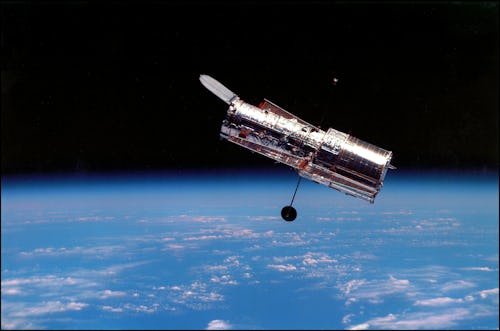
Scientists just found a star that existed 12.8 billion years ago. Wild, right? According to a paper published Wednesday in the journal Nature, the Hubble Space Telescope was able to successfully view a star (or pair of stars, we’re not entirely sure) that is 28 billion light-years away from us. It is the most distant star system that astronomers have ever managed to observe.
Officially known as WHL0137-LS, the scientists who brought this star system into focus have named it “Earendel” — an Old English term that means “rising light” or “morning star.” The distant glimmering light from long ago is believed to be 50 to 500 times more massive than the Sun that shines on us here on Earth. It’s also thought to be millions of times brighter than our preferred floating ball of fire.
According to researchers, Earendel is believed to have been shining as recently as 900 million years after the Big Bang occurred. The star is thought to be 8.2 billion years older than Earth, and 12.1 billion years older than any animal to appear on our planet. It is also by far the oldest star ever spotted, beating the previous record by 3.4 billion years.
The discovery of Earendel tells us more about the universe we occupy, and the technique used to spot it will help continue to illuminate our history. Astronomers used a gravitational lensing effect, which is like magnifying glasses for space watchers, using nearby clusters of galaxies to distort light and view beyond it. That’s perfect for these space detectives to keep looking for clues as to what ancient universes hold — and tell us more about why we’re here.







